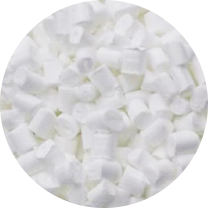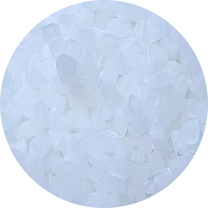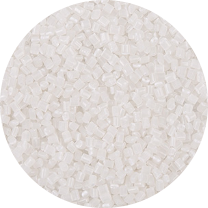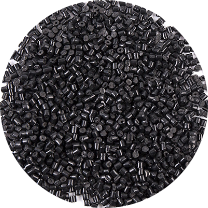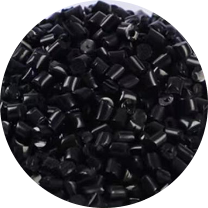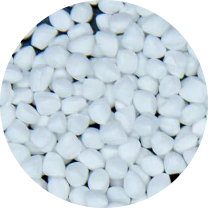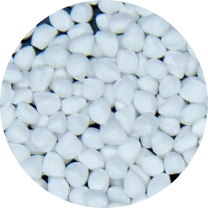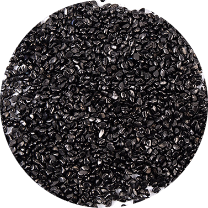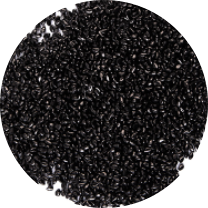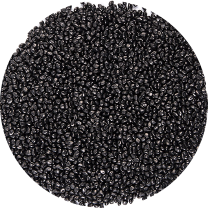Meltblown Masterbatch: The Essential Guide for High-Performance Nonwoven Applications
- 1 Understanding Meltblown Masterbatch and Its Key Applications
- 2 Best Meltblown Masterbatch for Filtration Media: Technical Specifications
- 3 Meltblown Masterbatch Production Process: From Raw Materials to Final Product
- 4 Color Masterbatch for Meltblown Nonwovens: Beyond Aesthetics
- 5 Antimicrobial Meltblown Masterbatch: Enhancing Protection in Medical Applications
- 6 Meltblown Masterbatch vs. Conventional Masterbatch: Critical Differences
Understanding Meltblown Masterbatch and Its Key Applications
The world of nonwoven materials relies heavily on specialized additives like meltblown masterbatch to achieve desired performance characteristics. This concentrated mixture of pigments, additives, and carrier resins plays a crucial role in enhancing the properties of meltblown polypropylene, the primary material used in filtration media, medical masks, and absorbent products.
Non-Woven/Polypropylene Fiber/Yarn Multicolor Color Masterbatch
What Makes Meltblown Masterbatch Unique?
Unlike conventional masterbatches, meltblown masterbatch must meet stringent requirements for fiber formation and thermal stability. The extremely fine fibers produced in meltblown processes (typically 1-5 microns in diameter) demand additives with exceptional dispersion characteristics and minimal interference with polymer rheology.
Primary Applications in Modern Industry
- High-efficiency filtration media for HVAC systems
- Medical and hygiene products including surgical masks
- Oil absorbent materials for environmental cleanup
- Specialized packaging with barrier properties
- Industrial insulation materials
Best Meltblown Masterbatch for Filtration Media: Technical Specifications
When selecting meltblown masterbatch for filtration media, several critical parameters must be considered to ensure optimal performance in demanding applications.
Key Performance Indicators
The effectiveness of filtration media largely depends on the masterbatch's ability to maintain consistent fiber diameter while adding functional properties. Below is a comparison of essential characteristics:
| Characteristic | Standard Grade | Premium Grade |
|---|---|---|
| Fiber Diameter Consistency | ±15% variation | ±5% variation |
| Additive Dispersion | Visible agglomerates at 100x | No agglomerates at 400x |
| Pressure Drop Impact | Increases by 10-15% | Increases by <5% |
| Filtration Efficiency | 95-98% at 3μm | 99-99.5% at 3μm |
Specialized Additive Packages
Advanced meltblown masterbatch for filtration media often includes:
- Electret charge enhancers for electrostatic filtration
- Hydrophobic additives for moisture resistance
- Antimicrobial agents for medical applications
- UV stabilizers for outdoor filtration systems
Meltblown Masterbatch Production Process: From Raw Materials to Final Product
The manufacturing of meltblown masterbatch involves precise control at every stage to ensure consistent quality and performance in end-use applications.
Raw Material Selection
The base polymer for meltblown masterbatch typically uses high-flow polypropylene homopolymer with MFI (Melt Flow Index) ranging from 400-1500 g/10min. This differs significantly from conventional masterbatch carriers which might use lower MFI materials.
Key Production Stages
- Pre-compounding of additives with dispersion aids
- Twin-screw extrusion with precise temperature zones
- Underwater pelletizing for uniform particle size
- Drying and screening to remove fines
- Batch homogenization for consistency
Quality Control Measures
Every batch of meltblown masterbatch undergoes rigorous testing including:
- Melt flow rate analysis
- Colorimetric measurements
- Microscopic dispersion checks
- Laboratory-scale fiber formation tests
- Ash content verification
Color Masterbatch for Meltblown Nonwovens: Beyond Aesthetics
While appearance matters, color masterbatch for meltblown nonwovens serves multiple functional purposes in addition to visual differentiation.
Technical Considerations for Colorants
Pigments used in meltblown applications must meet exceptional standards for thermal stability and particle size. Conventional colorants that work well in injection molding often fail in meltblown processes due to:
- Higher processing temperatures (typically 230-290°C)
- Extreme shear forces during fiber formation
- Sensitivity to additive interactions
Functional Benefits of Colorants
| Colorant Type | Primary Benefit | Secondary Benefit |
|---|---|---|
| Blue Phthalocyanine | UV Resistance | Antimicrobial effect |
| Red Iron Oxide | Heat Stability | EMI Shielding |
| Carbon Black | Conductivity | UV Protection |
Antimicrobial Meltblown Masterbatch: Enhancing Protection in Medical Applications
The demand for antimicrobial meltblown masterbatch has grown exponentially, particularly for healthcare and hygiene products where microbial control is critical.
Active Ingredient Technologies
Various antimicrobial agents are incorporated into meltblown masterbatches, each with distinct mechanisms of action:
- Silver-based ions: Broad-spectrum protection
- Zinc compounds: Cost-effective solution
- Quaternary ammonium: Surface modification
- Organic antimicrobials: Temporary protection
Performance Comparison
The effectiveness of antimicrobial additives varies significantly based on the application requirements:
| Antimicrobial Type | Log Reduction | Duration | Wash Resistance |
|---|---|---|---|
| Silver Ion | 4-5 log | Permanent | Excellent |
| Zinc Oxide | 2-3 log | 6 months | Good |
| Quaternary Ammonium | 3-4 log | Until washed | Poor |
Meltblown Masterbatch vs. Conventional Masterbatch: Critical Differences
While both product categories serve as additive carriers, meltblown masterbatch differs fundamentally from conventional masterbatches in several aspects.
Key Differentiating Factors
- Carrier resin MFI requirements
- Additive particle size limitations
- Thermal stability demands
- Shear sensitivity considerations
- Fiber formation interference potential
Application-Specific Formulations
The table below highlights how formulation priorities differ between standard and meltblown applications:
| Parameter | Conventional Masterbatch | Meltblown Masterbatch |
|---|---|---|
| Additive Loading | Up to 50% | Typically 10-25% |
| Particle Size | <10μm acceptable | <2μm required |
| Thermal Stability | 220-250°C | 250-300°C |
| MFI Range | 20-50 g/10min | 400-1500 g/10min |
prevNo previous article
nextThe Future of Meltblown Masterbatch: Innovations and Sustainability in Nonwoven Fabrics


 English
English 中文简体
中文简体 한국어
한국어 عربى
عربى

